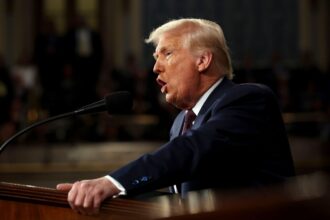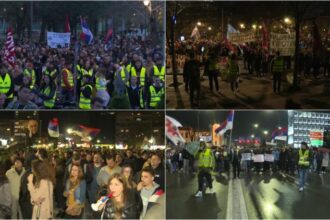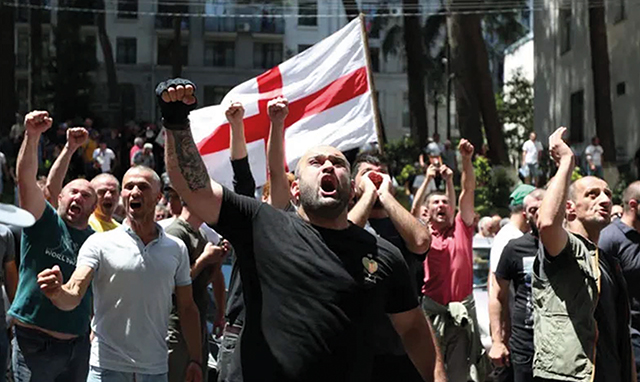The concept “Us against Them” has been part of humankind since its infancy. It is easy to argue that the concept of “Us versus Them” was taught by the mother of our species. It may have even led us to become the dominant species of the planet. In the modern age, this concept is abused so much that we do horrible things to our own brethren and countrymen.
This can take many forms, from denying entry to a country’s borders through to persecution and mass murder. Even if the people involved are unaware, any division is part of “Divide and Conquer”. If this is allowed to continue and develop, it can lead to more tragic outcomes, including genocide.
Genocide is a strong word. Initially used in 1944, when the Allied Forces learned of the atrocities perpetrated by the Nazi regime. It was quickly adopted as a legal term during post-war war crimes trials. In 1946, the United Nations General Assembly declared genocide to be a crime punishable by international law. Nevertheless, such atrocities do not occur infrequently in the modern world. Some of these atrocities are not as horrific as those committed in Nazi-controlled Germany or Communist China. Some are yet to be seen.
Gregory H. Stanton is the president of Genocide Watch. He defined genocide in a very specific way. “Genocide develops in eight predictable stages, but it’s not inexorable.” Preventive measures are available at each stage to stop the genocide. It is not a sequential process, but logically the earlier stages must precede the later ones. Logically, prior stages continue to function throughout the process.”
Each stage is deeply rooted in the relationship between the government and the people, as well as the modern concept that democracy operates under the consent of those governed. In the larger concept of civilizations, the concept of public officials acting at the will and benefit of the people is relatively new. Over time, it seems that the system’s execution has strayed from its written ideals.
Most people do not consider the first six stages in this list to be genocide. These are only indicators, and, as Dr. Stanton pointed out, they are warning signs that could become a reality. These steps are not mutually-exclusive, but can be taken either simultaneously or independently. These eight steps are evident in history.
1. Classification
The first step is to label the “desirables”. Both terms are subjective and based on the information that is given to an individual about the other members of his society. This is largely based on political ideology. Other classification initiatives include foreigner and local, religious and non-religious people, and vaccinated or unvaccinated.
The solution is to focus on the similarities rather than the differences. This is easier said than accomplished, as ideologies become a part if the individual after enough indoctrination. As a person who wields the sword accepts it as an extension of their will and themselves, so too does a person who accepts a certain ideology. Combining this extension with the classification of others allows them to reach out to those perceived as undesirables.
2. Symbolization
Human nature has long been a part in the application of a symbol or name to something foreign. The application of names or symbols to another group solely based on their non-violent ideology or inalienable characteristics creates a feeling of discrimination.
This symbolization can be expressed in many different ways. In the past, this symbolization has taken the form of dress, identification devices or even moving to a different area away from society. In the modern era, this has evolved to social media with the labeling and tagging those deemed as being a part or a group, organization, or having a particular ideology. This is largely due to the use of symbolism in order to dehumanize a group.
3. Dehumanization
This stage involves the complete removal of humanity from those who are opposed to your own group. During this stage, the notion that these people possess human rights and identity is completely removed. Dehumanization is achieved through classification and symbolization. This separates the individuals who are to be removed from a society that is perceived as “normal”. They are not only labelled as “outsiders”, but also as “diseases” or “poisons” to this society.
These people are often associated with groups that have already been dehumanized. The dehumanizing and distancing effect is only enhanced by linking the opposing person with communism or nazism or racism or facism or any other “-ist” term. Once this is done the violent acts are more easily accepted by the people who commit them.
4. Organization
During this phase, the exclusion and discrimination against another group becomes systematized. In the past, formalizing the persecution of those deemed undesirable has even taken on a bureaucratic form. Nazi Germany used a very strict and administrative method of killing their victims. The same was true for the Interahamwe during the Rwandan genocide.
This organization is usually a legal power that is represented in political bodies. This gives the impression of authenticity and protects the central authority from any responsibility. The vision is then promoted to schools, non-governmental organizations (NGOs), and other foreign partners to further paint the picture that they are in favour of purging “undesirables”.
5. Polarization
The next step is to use extremist groups within each sect to justify more violence and oppression. As the factions continue to separate, those at the fringes will start to act out. Those who do not align themselves with these radical subgroups will be pressed to either confirm their allegiance, or they will be labeled a dissenter.
Some of these extremist groups also don’t use the traditional force of arms in order to achieve their goals. Instead, they weaponize government agencies to enforce their agenda, using the organization stage mentioned above. At this point, it is important that the courts and law enforcement agencies work together to protect the targeted groups, as well as other perceived opponents.
6. Preparation
The extreme elements start to move once each side is polarized, and the target group has been dehumanized by the majority to the point that they are willing take action. The build-up to the executive step begins with the installation of special facilities for dealing with the targeted group, and the arming of paramilitary teams and “special” units. Often, at this stage, the targeted are moved to places where they can easily be monitored and controlled. This is usually done in public due to the feeling that the law will not apply and the fact that the target feels safe.
In most cases, it is at this stage that real protection can be provided. This is the last opportunity to prevent a real atrocity, whether it’s through foreign military or diplomat intervention. This is also dependent on both the political will of foreign nations and the relationship between the members of the national leadership.
7. Extermination
This is a crucial step in making genocide what is is, especially from a legal perspective. This is what separates a desperate state from a national catastrophe, whether it’s Hitler, Stalin, Mao, or Pol Pot. The number of deaths caused by these individuals is a testament to how important the building blocks are to ensuring that this phase achieves their goals.
The military and paramilitary forces that were previously created, with the support of the government, will be deployed to carry out this action. The only way to stop the violence at this point is by deploying an overwhelming foreign task force, usually consisting of NATO or UN components. By removing the local armed force from the genocide, and creating safe escape corridors, the foundations for a return of stability can be laid.
Any control given to the government can be weaponized very easily against the people. It is vital that the people remain vigilant and not allow social, political or religious differences to take away this power. The world has become more mature in its handling of these scenarios, but they still remain in some dark corners. China and Myanmar are still violators of the conventions.
It is not the sole responsibility of those who commit crimes. The concept of “Us against Them” is one that is planted by leaders, whether they are government officials or not. This must be fought at first glance. Unity can be a strong word, but coexistence and a sense of kinship are enough to stop those who would weaponize our natural differences.
Michael Godwin’s Op-Ed
Read More @ georgiatoday.ge




